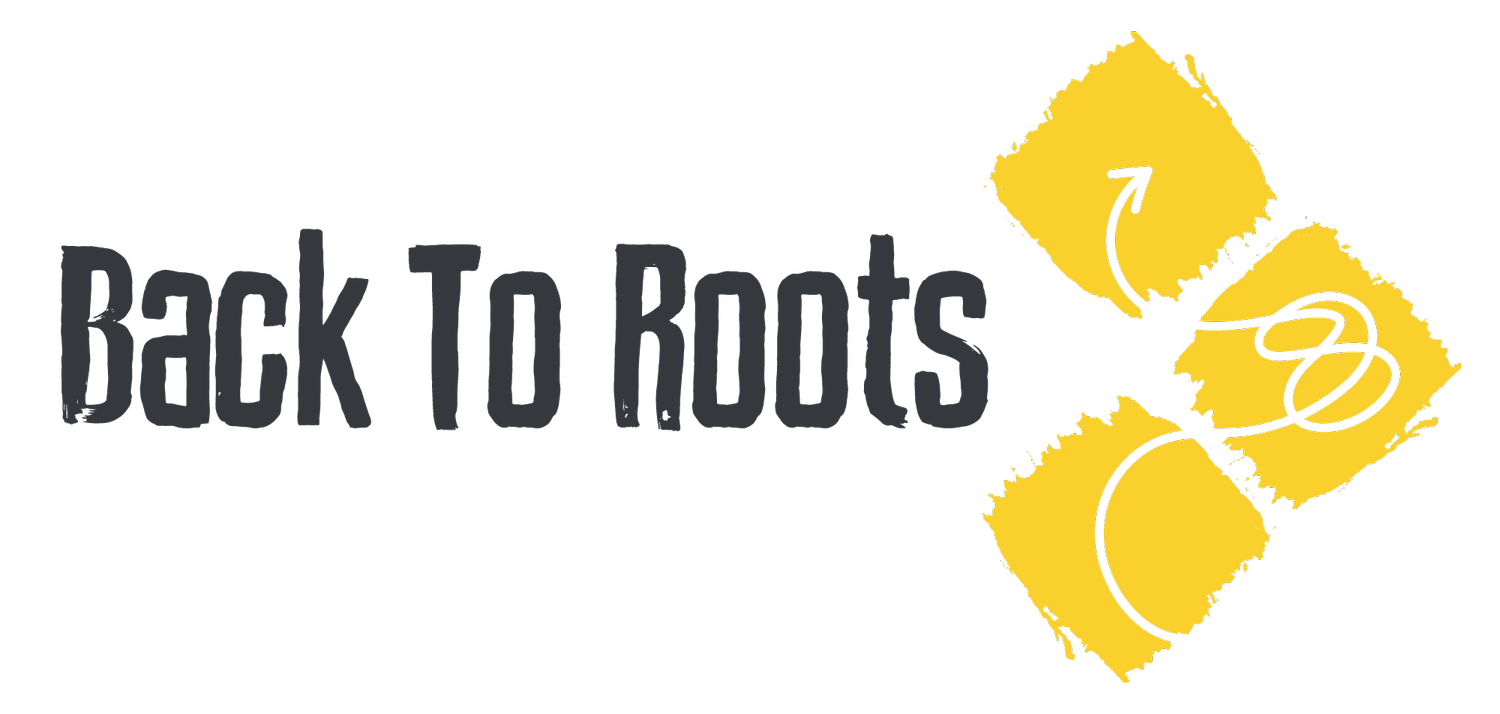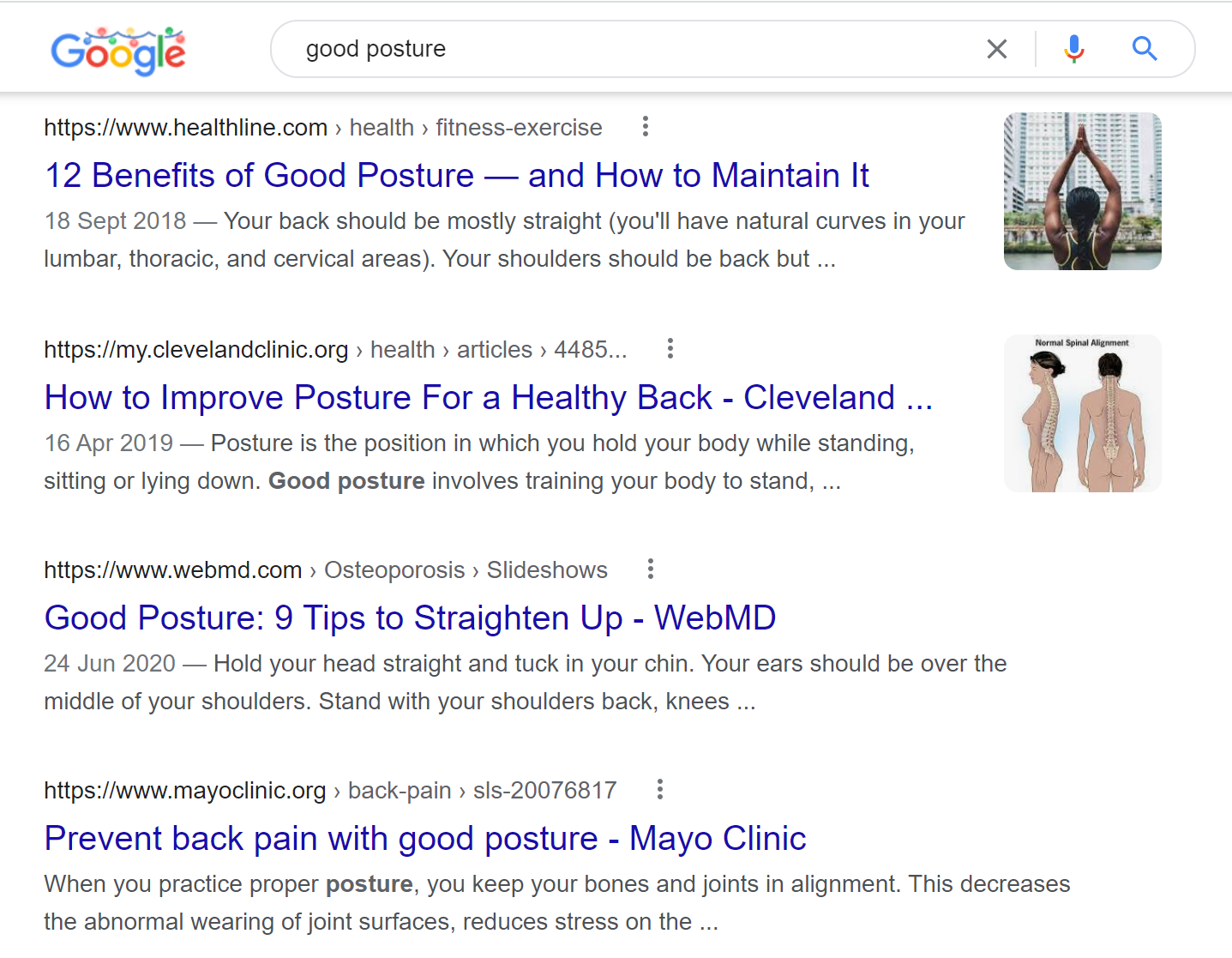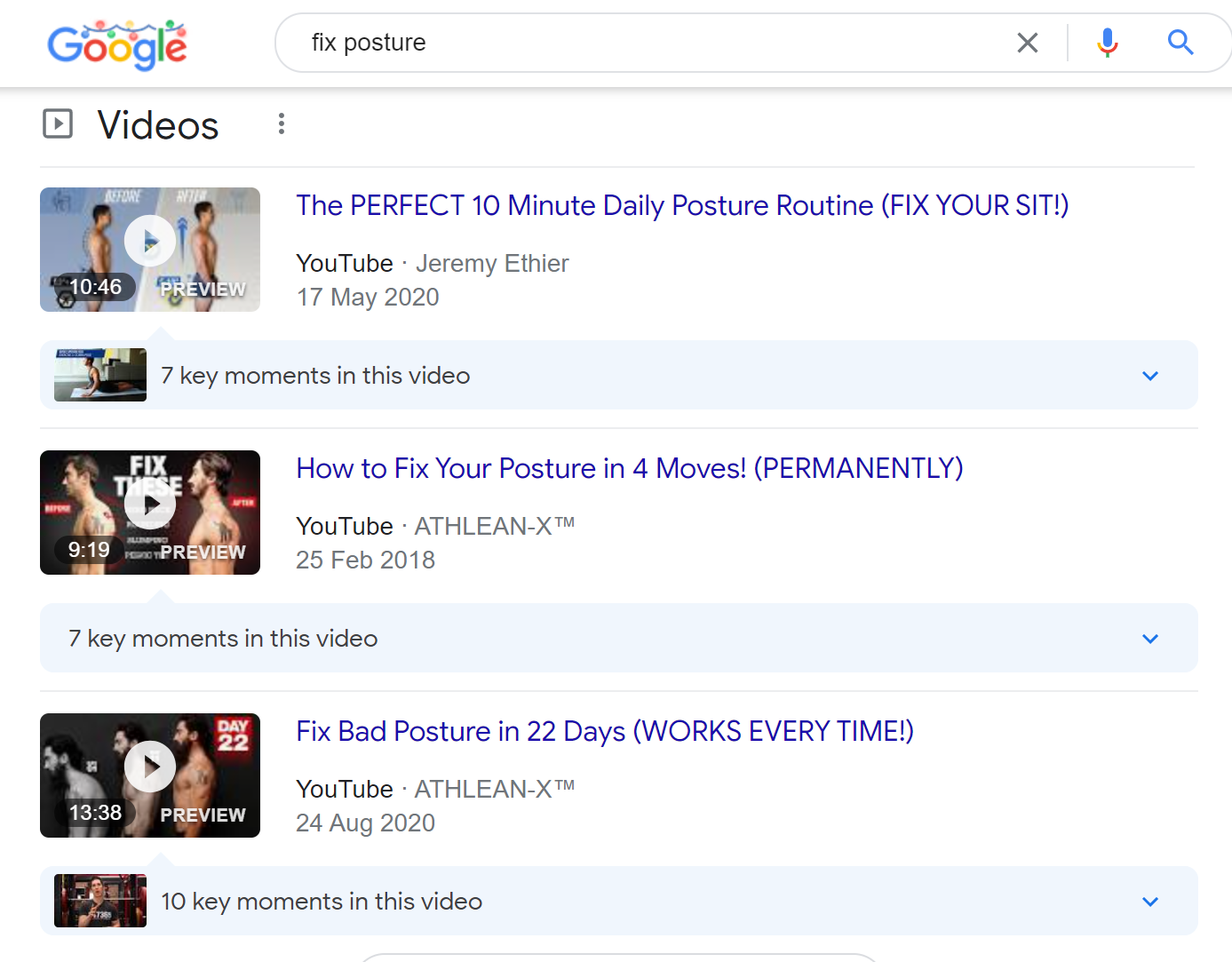Do I need to fix my posture?
From when we are children, we are told to ‘sit up straight’ and ‘don’t slouch’. Do we need to listen?
There is a common societal belief that there are ‘good’ and ‘bad’ sitting postures. Both healthcare professionals and the wider community of those with and without back pain identify upright posture as ‘good’ and slumped posture as ‘bad’ (O’Sullivan et al, 2012; O’Sullivan et al, 2013).
Many people who experience pain comment on their posture as a contributing or causative factor. A quick Google search brings up hundreds of articles on the scary consequences of ‘bad’ posture and simple ways you can ‘fix’ yours. (screenshot of google search)
But is it this simple?
As a healthcare provider, I want to help people suffering from aches and pains and explain things in simple terms they can understand, and not overuse medical terms or jargon. However, simplifying pain as a straightforward cause/effect relationship based on posture is just not supported by research evidence.
Many patients with back and neck pain have tried postural corrective exercises and stretches, altered their workstations to be ergonomic, worn posture correcting braces, and yet they still experience pain and their posture may or may not have changed at all. Surely if pain was caused by ‘bad’ posture then sitting in ‘good’ posture and adapting their computer screen height and the best ergonomic chair would have solved the problem?
We know from research that ergonomic interventions such as workstation adjustments have little long term impact on back and neck pain (Driessen et al, 2010; Hoe et al, 2018, Van Eerd et al, 2016; De Carvalho et al, 2020) and that the burden from back and neck pain is increasing despite healthcare spending on treatment them increasing (Hartvigsen et al, 2018; Safiri et al, 2020).
Perhaps we need to look elsewhere to help improve aches and pains…
A side note on pain
Pain is a complex topic, but to try and keep it simple, it’s an experience that is produced by the brain as a result of all the information it receives from the body and thoughts and beliefs around this. This is referred to as a biopsychosocial approach to looking at pain, as we now know that pain is not as interlinked to the state of our tissues as we once thought (see this article). Important factors relate to why we experience pain include (but are not limited to) individual factors (age, genetics, anatomy), psychological factors (coping, fear of pain, anxiety, depression), contextual factors (beliefs, culture, socioeconomic status), lifestyle factors (poor sleep, low physical activity levels, smoking) and so on…
In short, it’s super complex, so we can’t put pain down to just one factor (like posture).
Pain is a multifactorial experience (Froud et al, 2014)
But if you don’t believe me yet, let’s see what the research say about posture and pain
A good place to start is the discussion of neck pain and ‘forward head posture’. Scary-looking pictures pop up on social media and Google searches about the dangers of forward head posture.
Images like this are rife on the internet. Research on this was done on cadavers (dead bodies) which can’t adapt like alive humans can! These images provoke fear around normal variations of neck position.
However, there appears to be little in the way of supportive evidence on these dangers. Even back in the 1990s, researchers were finding that a wide range of normal variation exists in the posture of the cervical spine and that there is little evidence that altered curvatures of the neck are of any significance (Gay, 1993). Further studies have demonstrated that people both with and without neck pain have a substantial variation in the curvature and posture of their neck and are not significantly different between those with and without pain, therefore the structural differences in neck curvature should be considered coincidental (Grob et al, 2007).
More recently, forward head posture has been found to be no different between those with chronic (long term) neck pain and asymptomatic individuals (Ghamkhar and Kahlaee, 2019). Further studies have found that forward head posture is not associated with neck pain, disability, and headache (Martinez-Merinero et al, 2020). Neck sitting posture in young adolescence has been found to NOT be a risk factor for persistent neck pain and even that a slumped posture rather than an upright sitting posture was protective of neck pain (Richards et al, 2021). Forward head postures have been found to be more associated with low mood and depression and not associated with neck pain. As well as this, those with more upright postures exercised more frequently (Richards et al, 2016)
These findings in research studies demonstrate that we have less to worry about when it comes to our sitting posture. There is little association between position and pain, but there are some links between posture, exercise, and psychological factors like depression.
Some of the leading researchers in musculoskeletal pain collaborated to produce an article and a mass media campaign called ‘Sit up Straight’: Time to Re-evaluate (Slater et al, 2019). The main points are summarised in the infographic below:
The scary-looking pictures about the weight of your head causing neck pain and further issues are not only not reflective of the research evidence, but I would argue that these pictures do more to scare patients than help them. Research shows there is a huge impact of kinesiophobia (fear of movement) in relation to chronic musculoskeletal pain (Luque-Suarez et al, 2019), so it makes little sense to increase fear.
It appears that on the Internet, these scary-sounding problems will all be fixed by correcting your posture and usually buying some treatment / pillow / ergonomic work chair / posture correcting device. The cynical person in me thinks that this is more likely to be a marketing ploy to sell you their product rather than tell you less wrong evidence-based information…..
Let’s move on to back pain and posture.
It is commonly believed that sitting for long periods is bad for your back, and that ‘sitting is the new smoking’. But is this true? One systematic review on occupational driving and back pain concluded there may be an association but the specific postures associated with back pain and the strength of this relationship have yet to be identified (Tinitali et al, 2021). Further systematic reviews have found there is no consensus on the causality of spine postures on low back pain (Swain et al, 2020). Lederman summarised the high number of postural-structural-biomechanical factors that are NOT associated with back pain including variations in lumbar spine curves and explained the body has the surplus capacity to tolerate variation in spinal posture. Therefore correcting these postural-structural-biomechanical factors is not clinically attainable and is unlikely to change the course of a lower back condition (Lederman, 2011).
Furthermore, biopsychosocial factors like lower perceived self-efficacy and back muscle endurance, male gender, higher BMI, and negative thoughts are associated with slumped sitting postures (O’Sullivan et al, 2011). Back pain made worse with sitting has been shown to be weakly associated with more slump in sitting whereas back pain not made worse by sitting has been shown to be weakly associated with less slump in sitting (O’Sullivan et al, 2011). What this suggests is that slumped postures may be a symptom modifier in relation to pain, therefore a consequence of experiencing back pain rather than a cause.
Research dump over, let’s get to the crux of the matter
This article isn’t designed to deny that posture has any relation to aches and pains because that would be a non-evidence-based position to hold. What we can say is that the current evidence doesn’t support that postures are the CAUSE of pain. Certain positions might be sensitive and uncomfortable to be in, but that doesn’t mean they are the cause.
A saying in research and statistics is that ‘correlation does not imply causation’ meaning that you can find that two things are happening together but they may not be interlinked. One comical example of how two factors can have a similar relationship but not be causative factors is a comparison of the number of people who drowned by falling into a swimming pool and the number of films that Nicolas Cage appeared in by year.
There is a clear correlation between the two factors, but this does not prove that Nicolas Cage’s film appearances cause the deaths of people falling into swimming pools or vice versa!
What’s important here, is a healthy bit of scepticism. Some people with ‘bad’ posture have no pain at all. Some people with ‘good’ posture suffer immensely from aches and pains. So we need to see the bigger picture in all this and find out what’s important for each individual.
This is all well and good, but what if certain postures hurt?
A thought to consider here is how long are we spending in these postures? If we spend 5-10 minutes sitting still at a desk, we will most likely not experience pain. However, what about if we spend 4 hours there without taking much of a break? I would guess that most people would start to find this uncomfortable. This means that this is NORMAL!
Military posture…still painful after a time!
An example that helps paint the picture here is people in the military. Soldiers often have to stand to attention in what we would describe as ‘good’ posture for long periods of time. Do you think that this would be uncomfortable after a while? Absolutely!
But this brings me to another important point…could you get better at standing in a certain position over time if you practiced? Absolutely!
If you train for something and expand your envelope of function, you will have a greater capacity to do that task. If you’ve ever done a ‘Couch to 5k’, you’ll know exactly what I mean. At the start, you run only for 1 minute at a time and after 10-12 weeks you can run for 30 minutes without stopping. This brings me back to posture. If you get uncomfortable after 15 minutes of sitting, sit for 10 minutes and then change position. Then repeat for another 10 minutes. After a few weeks, you’ll likely find that you might be able to sit for 15 minutes without discomfort.
The concept of Envelope of Function explains how we can increase our capacity to do something by exposing ourselves to a stressor at a tolerable level and increasing it gradually. Examples include ‘couch to 5k’, calluses on our hands from manual work and a gradual suntan.
One of the most consistent interventions in the ergonomic research from above was that exercise interventions like resistance training had the biggest positive and long-term effect on back and neck pain. (Van Eerd et al, 2016). The exact mechanism behind this is not currently known but several hypotheses exist.
One hypothesis is that resistance training increases our capacity to tolerate movements and positions and strengthens muscles. Greg Lehman, a physiotherapist, and chiropractor uses the ‘cup’ analogy to explain why resistance training has such benefits.
Essentially, we have lots of ‘stuff’ in our cup, for example, work stress, poor sleep, poor diet, lack of physical activity, feeling a bit down in the dumps and therefore having a slumped sitting posture at work...then a small additional stressor in our life can cause the cup to overflow and then hey presto, pain. Ways to stop the cup from overflowing include taking stressors out of the cup and, more importantly for the long term, building a bigger cup (which can be done through resistance training).
So the key things to remember are that:
There is no ‘good’ or ‘bad’ posture generally
There may be ‘good’ or ‘bad’ postures for you individually that may be uncomfortable or sore
It’s normal to have forward head posture, rounded shoulders or an arched back
The amount of TIME spent in the position may be more important than the position itself
Your best posture is your next posture - change positions regularly
Get active and strong - to build a bigger cup
Pain is a complex topic and is influenced by not only physical factors - we can’t explain why you are experiencing pain from just one factor
Sam Ogilvie :)
MChiro, LRCC
References:
Hoe VCW, Urquhart DM, Kelsall HL, Zamri EN, Sim MR. Ergonomic interventions for preventing work‐related musculoskeletal disorders of the upper limb and neck among office workers. Cochrane Database of Systematic Reviews 2018, Issue 10. Art. No.: CD008570. DOI: 10.1002/14651858.CD008570.pub3.








